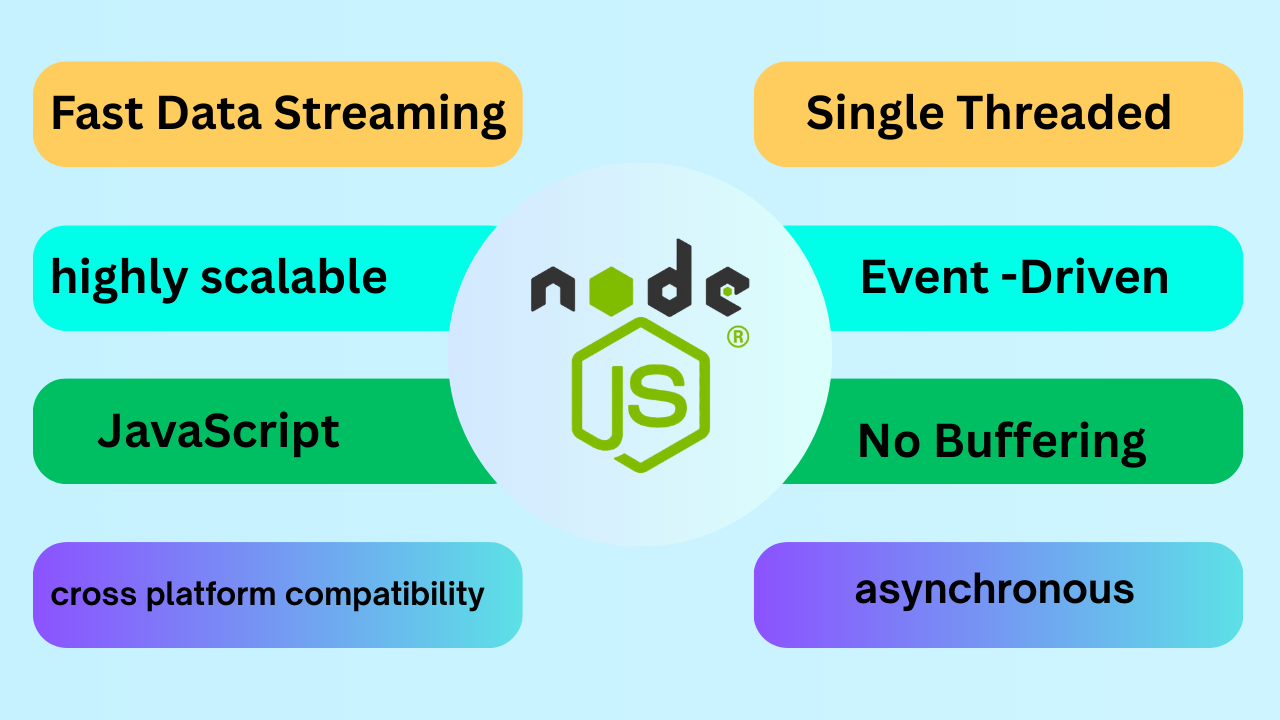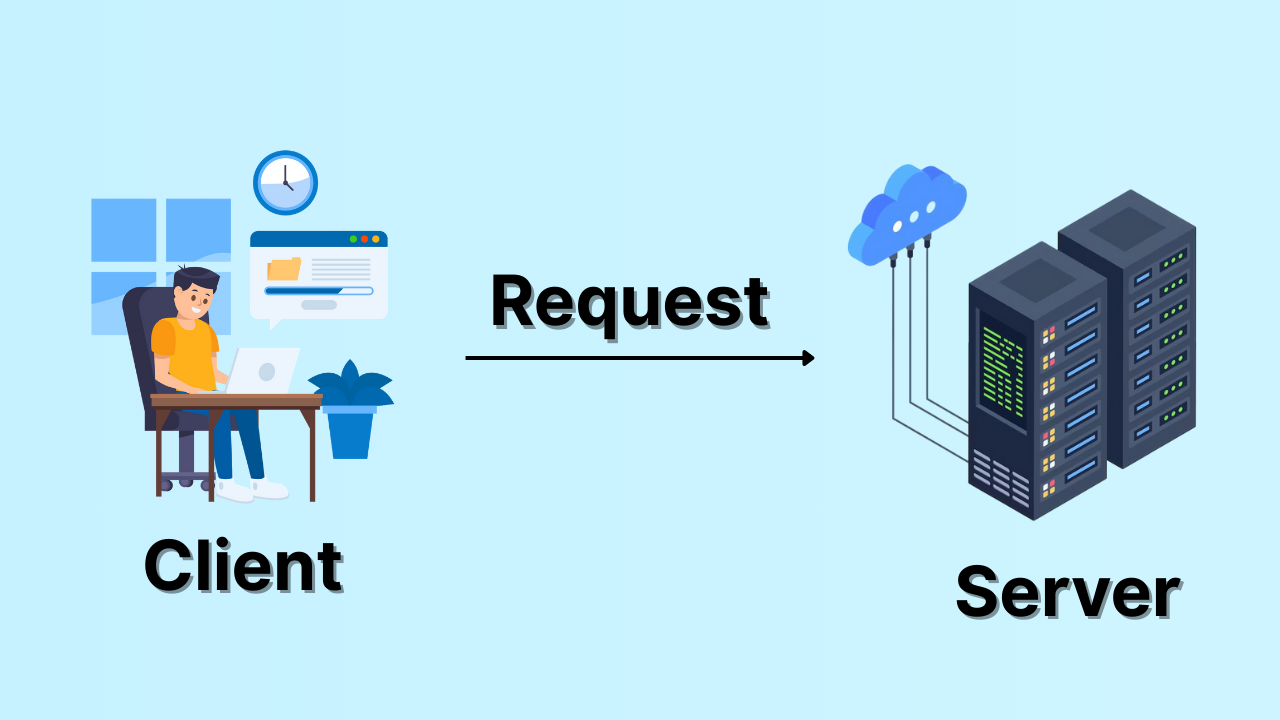What is Node JS?
Node.js is a runtime environment that allows JavaScript to run outside of a web browser. Built on Google’s V8 JavaScript engine , it provides a powerful platform for server-side development. With its asynchronous, event-driven architecture, Node.js is well-suited for building fast, scalable, and efficient network applications.
- Single-Threaded with Event Loop : Node.js operates on a single thread while using an event loop to efficiently manage multiple tasks at the same time.
- Asynchronous and Non-Blocking: Its architecture allows tasks to run without waiting for others to complete, ensuring smooth and uninterrupted performance.
- Optimized with V8 Engine: The V8 engine compiles JavaScript into machine code, making Node.js fast, lightweight, and highly efficient.
"Hello, World!" Program in Node.js
A "Hello, World!" program is the most basic example to begin working with Node.js. Unlike in a browser, where JavaScript typically runs inside the console, Node.js executes JavaScript directly in a server environment or through the command line. This simple program helps beginners understand how Node.js runs outside the browser.
Key Features of Node.js
- Server-Side JavaScript: Node.js enables JavaScript to run outside the browser, making it possible to build powerful backend applications.
- Asynchronous & Non-Blocking: With its event-driven architecture, Node.js handles multiple requests simultaneously without waiting, boosting efficiency and performance.
- Single-Threaded Event Loop: Uses a single thread with an event loop to manage concurrent tasks, eliminating the overhead of multiple threads.
- V8 JavaScript Engine: Powered by Google’s V8 engine, Node.js compiles JavaScript into native machine code, delivering exceptional speed and high performance.
- Scalable & Lightweight: Well-suited for building microservices and managing high-traffic applications while keeping resource usage low.
- Extensive NPM Ecosystem: Provides access to thousands of open-source packages through Node Package Manager (NPM), helping developers accelerate and simplify project development.
How Node.js Works
Node.js is a runtime environment that enables JavaScript to run outside the web browser. It operates on an asynchronous, event-driven architecture , which allows it to handle multiple tasks without blocking execution. Built on Google’s high-performance V8 JavaScript engine, Node.js is optimized for speed and efficiency, making it an excellent choice for building scalable and real-time network applications.
Single-Threaded Event Loop Model
Node.js operates on a single thread but uses an event loop to efficiently manage multiple concurrent requests. This design allows it to remain lightweight while delivering high performance in handling asynchronous operations.
- Client Sends a Request: The request may involve retrieving data, accessing files, or querying a database.
- Request Added to the Event Loop: Non-blocking requests (such as database fetches) are delegated to worker threads without pausing the main thread.
- Asynchronous Operations in Progress: While waiting for results, Node.js continues processing other incoming tasks seamlessly.
- Callback Execution: Once the background operation completes, the callback function is triggered, and the response is delivered back to the client.
Components of Node.js Architecture
- V8 Engine: Compiles JavaScript into machine code, enabling fast and efficient execution.
- Event Loop: Coordinates asynchronous operations by managing tasks without blocking the main thread.
- Libuv: Provides the underlying support for I/O operations, a thread pool, and timers, making non-blocking execution possible.
- Non-Blocking I/O: Executes multiple operations simultaneously without waiting for previous ones to finish, ensuring smooth performance.
Where to Use Node.js
Node.js is best suited for applications that demand high performance, scalability, and real-time processing. Below are some of the most common and effective use cases:
- Web APIs and Backend Services: Ideal for building RESTful and GraphQL APIs, as well as backend services that power mobile and web applications.
- Real-Time Applications: Commonly used in chat platforms such as WhatsApp and Slack, and in live streaming services like Netflix and Twitch.
- Microservices Architecture: Enables the development of scalable, independent, and cloud-based services that can work together efficiently.
- IoT (Internet of Things) Applications: Handles real-time data streams from IoT devices, making it a strong choice for smart home automation and sensor-driven systems.
- Serverless Computing: Works seamlessly with AWS Lambda, Azure Functions, and Google Cloud Functions, delivering lightweight and efficient serverless execution.
- Single-Page Applications (SPAs): Integrates well with frameworks like React, Angular, and Vue.js by managing backend API requests effectively.
- Data-Intensive Applications: Suitable for big data processing and real-time analytics, often paired with NoSQL databases such as MongoDB and Firebase.
Edit Profile
Help improve @KR

Was this page helpful to you?
Contact Khogendra Rupini
Are you looking for an experienced developer to bring your website to life, tackle technical challenges, fix bugs, or enhance functionality? Look no further.
I specialize in building professional, high-performing, and user-friendly websites designed to meet your unique needs. Whether it’s creating custom JavaScript components, solving complex JS problems, or designing responsive layouts that look stunning on both small screens and desktops, I can collaborate with you.
Create something exceptional with us. Contact us today
Open for Collaboration
If you're looking to collaborate, I’m available for a variety of professional services, including -
- Website Design & Development
- Advertisement & Promotion Setup
- Hosting Configuration & Deployment
- Front-end & Back-end Code Implementation
- Code Testing & Optimization
- Cybersecurity Solutions & Threat Prevention
- Website Scanning & Malware Removal
- Hacked Website Recovery
- PHP & MySQL Development
- Python Programming
- Web Content Writing
- Protection Against Hacking Attempts

